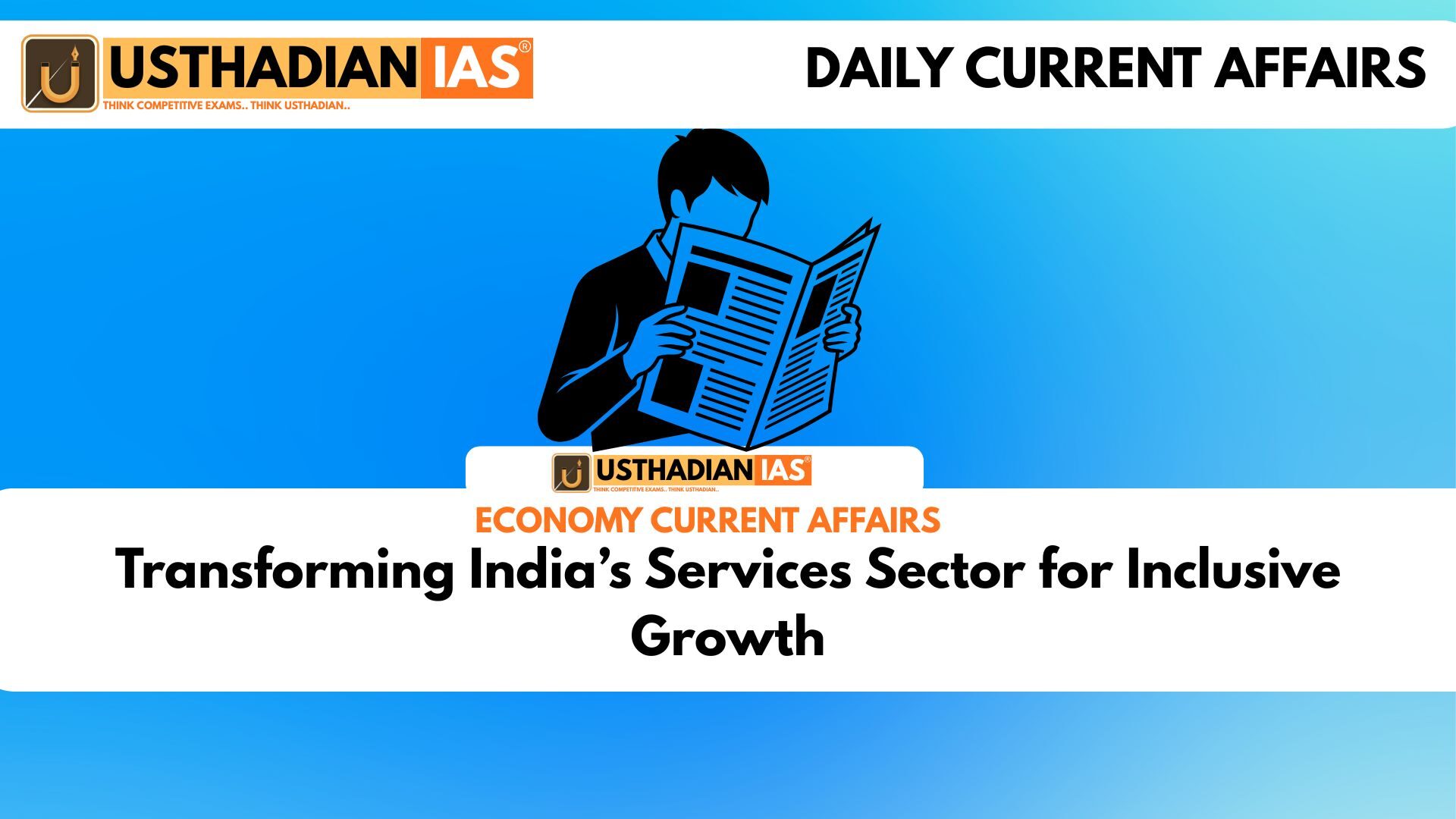Overview
Transforming India’s Services Sector for Inclusive Growth: The NITI Aayog has released two major reports on India’s services sector titled Insights from GVA Trends and State-level Dynamics and Insights from Employment Trends and State-level Dynamics. These reports highlight the sector’s critical role in India’s economic and employment transition, while also identifying challenges such as informality, inequality, and limited formal job creation.
Static GK fact: The NITI Aayog was formed in 2015, replacing the Planning Commission, to promote cooperative federalism and evidence-based policy formulation.
Services as the Core of India’s Employment Transition
The services sector employed 188 million workers in 2023–24, making it the second-largest employer after agriculture. Despite contributing nearly 55% of Gross Value Added (GVA) in 2024–25, the sector provides less than one-third of total jobs. Most of these jobs are informal and low-paying.
Static GK fact: The services sector includes sub-sectors such as IT, finance, trade, transport, healthcare, and education, contributing significantly to India’s GDP growth.
Employment Landscape
Between 2017 and 2023, the services sector added around 40 million jobs, ranking second only to construction in employment generation. It acts as a labour shock absorber, particularly during economic shifts, but employment remains polarised.
High-value services such as IT, finance, and healthcare are highly productive but generate limited employment. Traditional services like trade and transport, on the other hand, employ millions but are highly informal. India’s transition to a service-led economy is slower compared to peers like China and Indonesia.
Employment Profile and Inequality
The spatial divide is evident, with 60% of urban workers engaged in services, compared to less than 20% of rural workers. Gender disparity persists—only 10.5% of rural women work in services, versus 60% of urban women, with wage gaps continuing across all levels.
The workforce is dominated by prime-age workers, while youth face instability and underemployment. Educational attainment improves employability, yet 87% of service workers lack social security. Rural women earn less than 50% of men’s wages, reflecting deep-rooted inequality.
Static GK Tip: According to the Periodic Labour Force Survey (PLFS), India’s overall female labour force participation rate stood at 37% in 2023–24, a gradual rise from previous years.
Roadmap for Transformation
The reports outline a comprehensive roadmap for inclusive transformation. Priorities include formalisation and social protection for informal, gig, and MSME workers. Expanding digital skilling, especially for women and rural youth, is key to ensuring equitable participation.
Technological and green jobs will play a critical role in shaping future employment. The creation of Tier-2 and Tier-3 service hubs can balance regional growth, supporting state-level clusters and strengthening India’s competitive advantage.
Static GK fact: India’s Gig and Platform Economy is expected to employ over 23 million workers by 2030, according to NITI Aayog’s 2022 report.
Static Usthadian Current Affairs Table
Transforming India’s Services Sector for Inclusive Growth:
| Topic | Detail |
| Reports released by | NITI Aayog |
| Report titles | Insights from GVA Trends and State-level Dynamics; Insights from Employment Trends and State-level Dynamics |
| Year of release | 2025 |
| Workers employed in services (2023–24) | 188 million |
| Services share in GVA (2024–25) | Nearly 55% |
| Informality rate | 87% lack social security |
| Rural women participation | 10.5% |
| Urban women participation | 60% |
| New jobs created (2017–2023) | Around 40 million |
| Key recommendation | Formalisation, digital skilling, regional service hubs |








